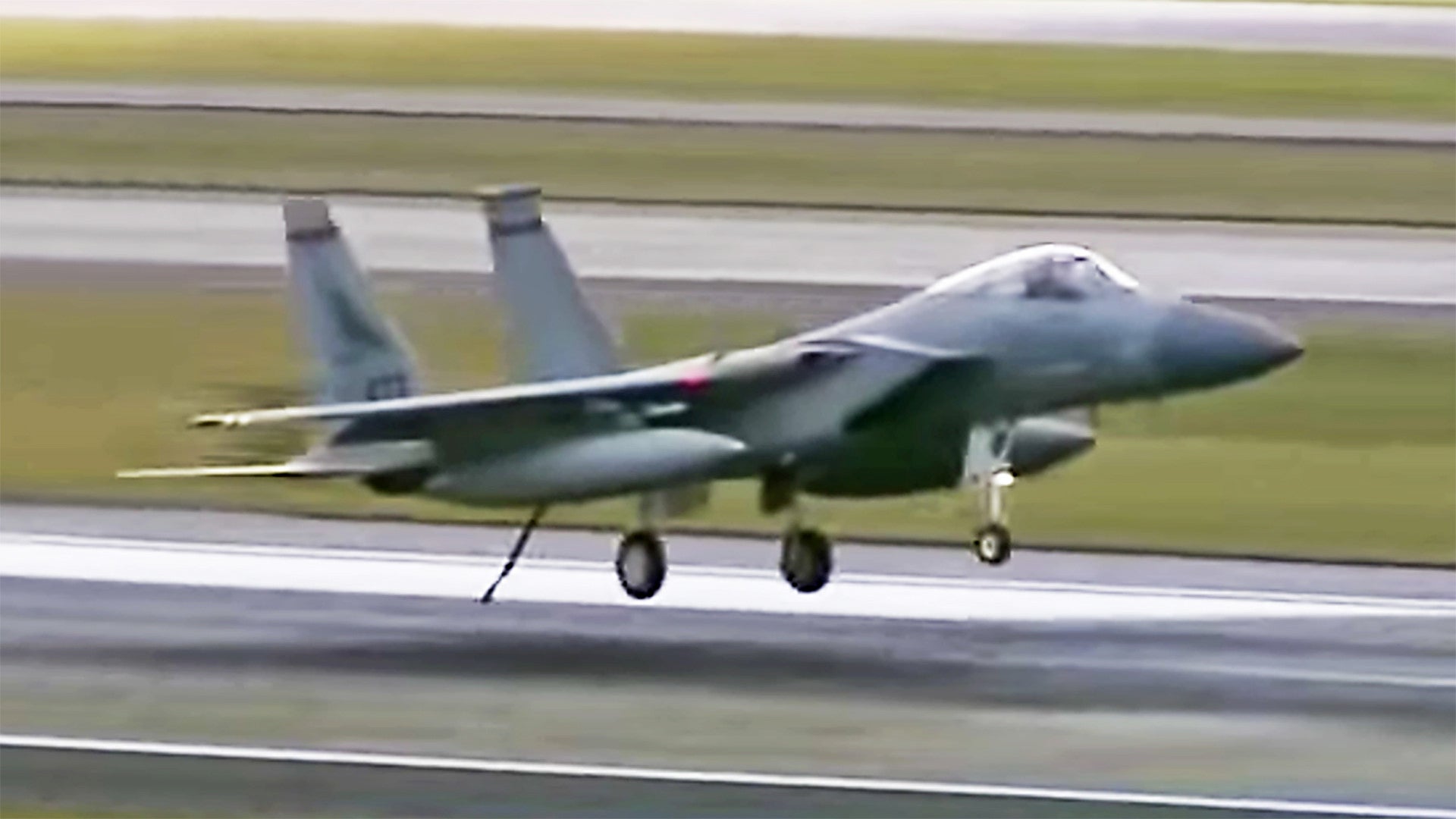Last year, The War Zone
was first to report that an F-15C Eagle from the Oregon Air National Guard’s 142nd Fighter Wing had fired its live AIM-120C AMRAAM and AIM-9X Sidewinder missiles into the Pacific Ocean before making an emergency landing at Portland International Airport. At the time, details about the mishap were limited, but now we have obtained a copy of the official Air Force accident report that describes exactly what happened.
The F-15C in question, known by its serial number 78-0473 and going by the callsign “ROCK 42” at the time, was sitting alert at Portland International Airport on Feb. 20, 2019. That day, it and another alert jet were scheduled to conduct a mock scramble and then train with two additional flights of four F-15Cs each.
Despite the planned training mission, since the 78-0473 was designated to be on alert that day, it was still armed with four AIM-120Cs and two AIM-9X missiles, all of which were live, as well as 940 rounds of 20mm ammunition for its M61 Vulcan cannon. It also carried 48 MJU-10/B decoy flares and two external fuel tanks.
“The mission briefing and scramble ground operations were unremarkable,” the official accident report says, which The War Zone obtained in a redacted form via the Freedom of Information Act. Rock 42, the second in the two-ship alert flight, conducted an afterburner takeoff as part of the scramble drill at approximately 8:28 AM local time.
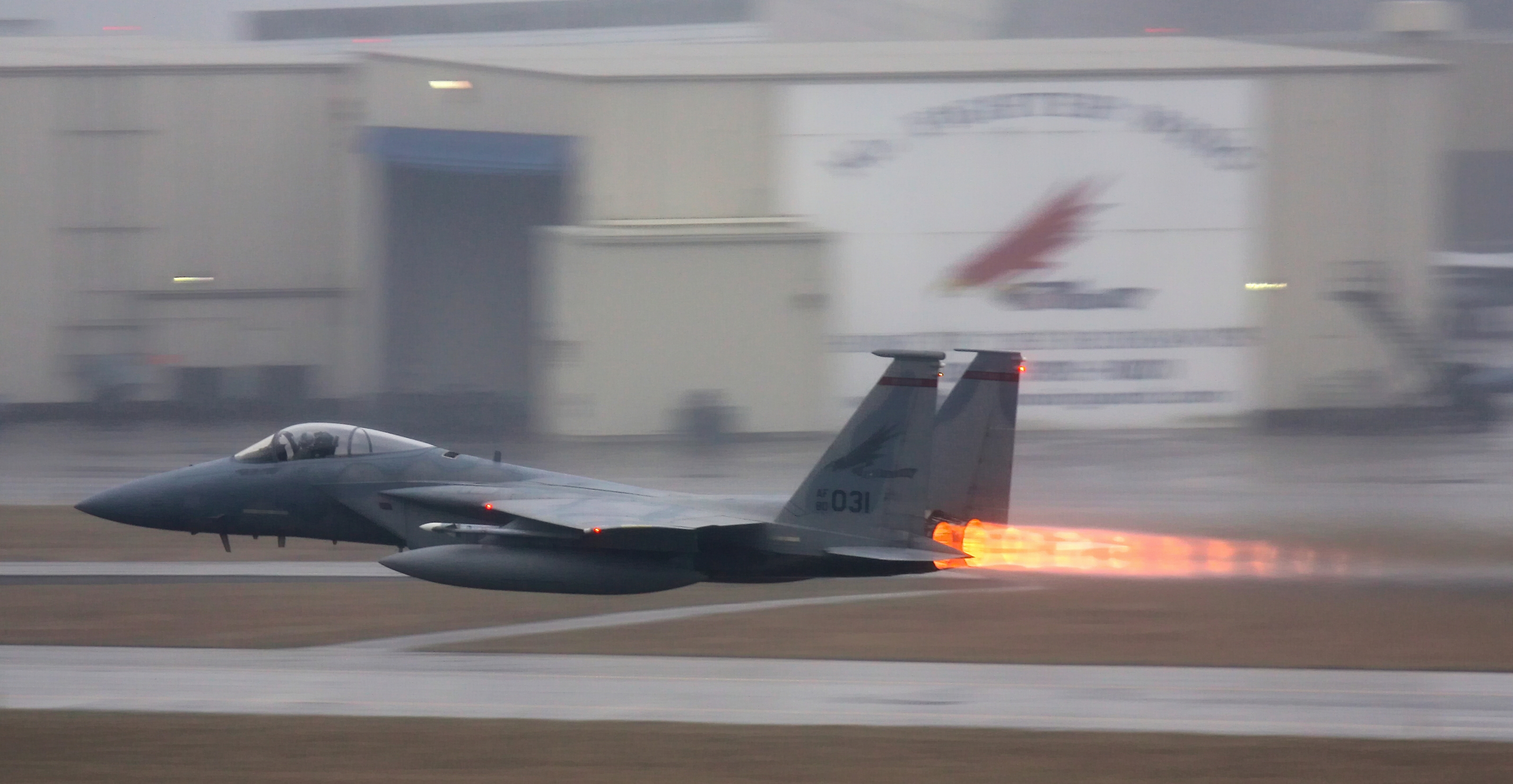
Shortly after the takeoff, the F-15C’s pilot, whose name and rank is not present in the unredacted portions of the accident report, noticed a warning light indicating that the jet’s left main landing gear had not retracted properly. Rock 42 alerted their wingman and local air traffic controllers and requested a clear block of airspace in which to try to fix the issue.
In accordance with official Air Force procedures, the pilot lowered and then raised all of the plane’s landing gear again to see if this would unstick the left main landing gear. The pilot of the other alert F-15C, flying chase for the stricken Eagle, reported that the left main landing gear appeared to be locked in the downward position and did not move during this process.
Unable to retract the left main landing gear, Rock 42 declared an inflight emergency and then began preparing for an emergency arrested landing at Portland International Airport. “The Landing Gear Emergency-Landing checklist directed the aircrew to ‘Jettison armament and chaff/ flares …’ The MF [mishap flight] obtained a clearance to the overwater airspace to prepare for the armament jettison,” the report says.
Rock 42 fired off all 48 its MJU-10/Bs flares in the designated airspace over the Pacific Ocean without issue, after which the pilot continued to coordinate with Air Force personnel on the ground about both the nature of the landing gear issue and what to do with its remaining ordnance. A team of off-site specialists, known as a Conference Hotel, or CH, was contacted to help with continued troubleshooting. A representative from Boeing, the present prime contractor for the F-15 series, were also consulted.
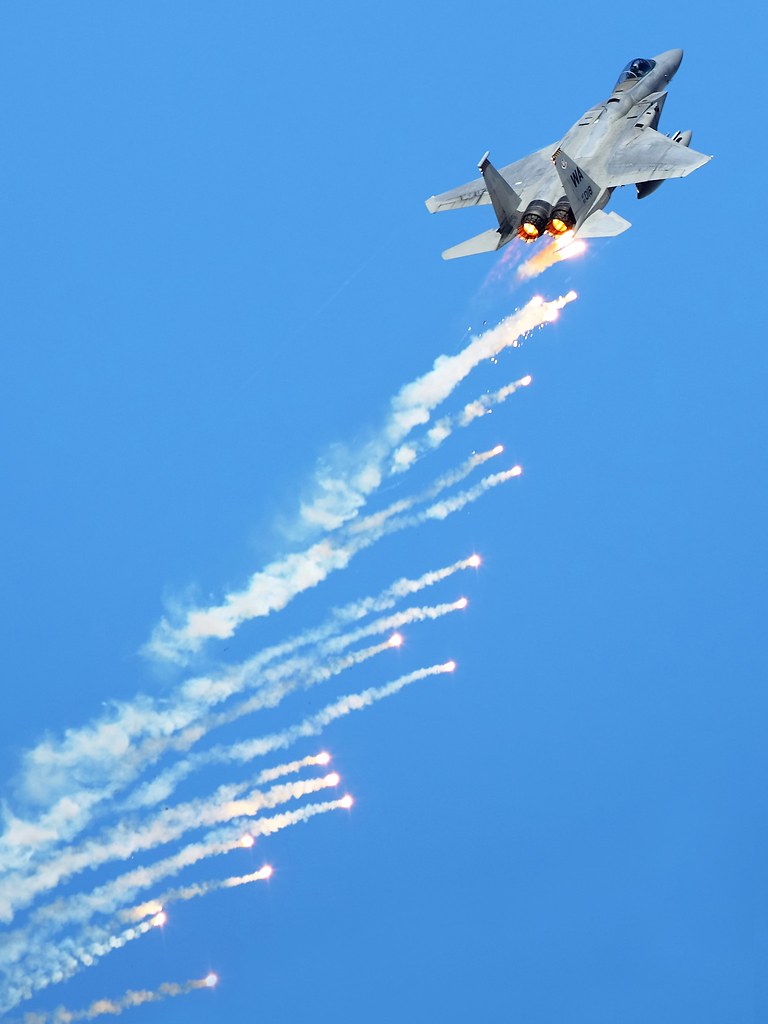
A second attempt to lower and raise all of the landing gear also failed, but Rock 42’s wingman did observe a spurt of hydraulic fluid during the process and noted that the left main landing gear was also covered in it. However, the stricken Eagle’s pilot reported there were no problems with the jet’s hydraulic pressure according to their in-cockpit readouts. Based on the information available, the Boeing representative stated that they were confident that there was serious risk that the landing gear strut could collapse during any emergency landing.
At this point, Rock 42 was also running low on fuel. A KC-135R tanker, with the callsign Expo 91, which had already been operating in the area, had been redirected to provide support. However, there were concerns about whether the F-15C would be able to fly fast enough with its landing gear down to successfully refuel.
Rock 42’s wingman lowered their landing gear and refueled first, at a speed of 230 knots, to make sure the maneuver was safe. After that, Rock 42 also conducted a successful aerial refueling with Expo 91. Both jets linked up with the tanker a second time.
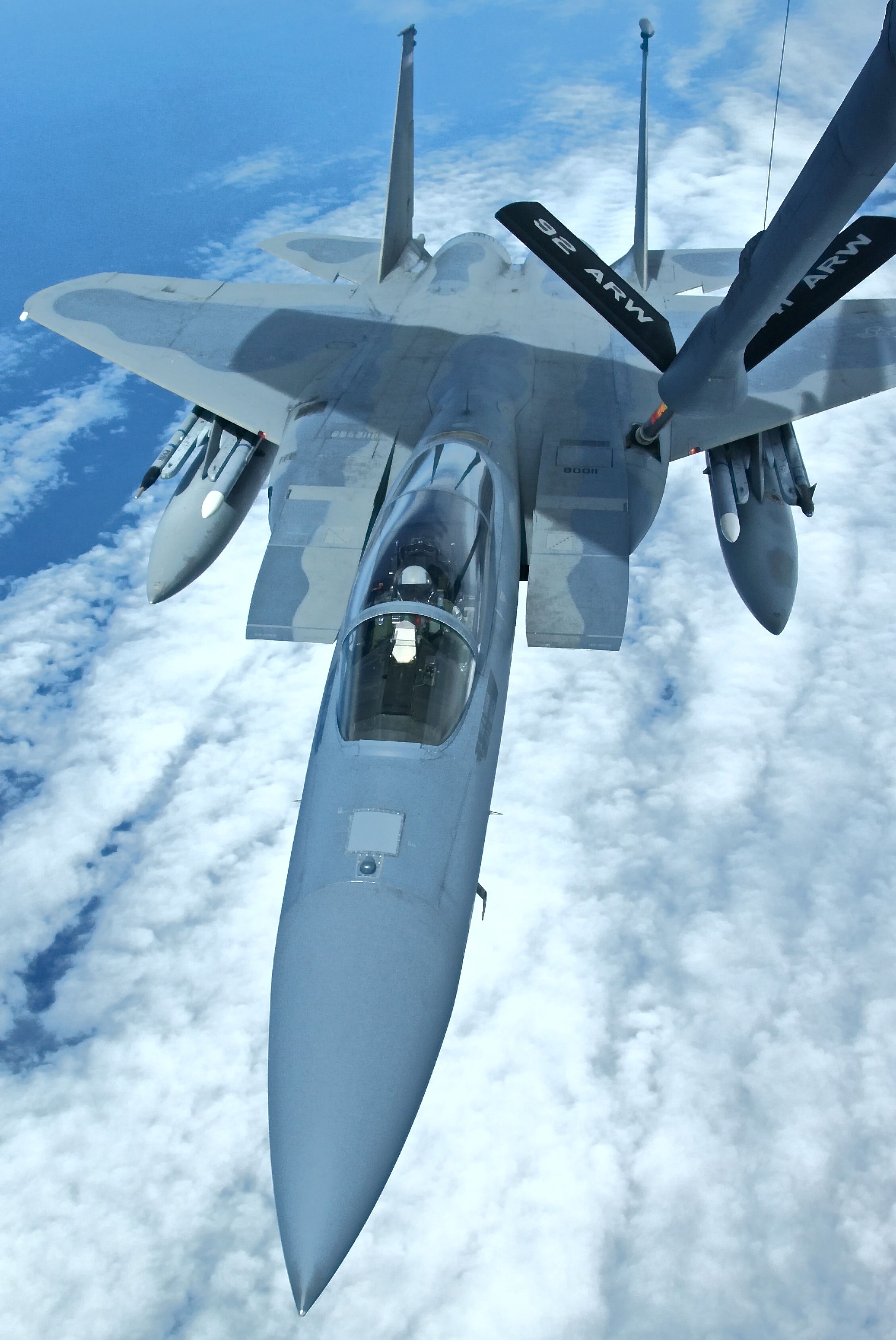
During these refuelings, Air Force personnel had been working out a plan for Rock 42 to safely get rid of its four AIM-120Cs and two AIM-9Xs, through a combination of firing them off and simply jettisoning them into the Pacific. “They determined, and relayed to the MF [mishap flight], that they would need a 40 nautical mile (NM) long by 12 NM wide ‘shooting lane’ at the lowest possible altitude,” according to the accident report.
Clouds off the Oregon coastline made it difficult for Rock 42’s wingman to conduct an impromptu “range sweep” to make sure there were no civilian or commercial aircraft in the lane or ships in the water below. Air traffic and shipping lane traffic data was subsequently used to confirm that the area was clear. It took three passes to fire all of the missiles.
“On the first pass the MP [mishap pilot] selectively jettisoned the AIM-120C located on station 3 (left side of fuselage), followed by the AIM-120C on station 7 (right side of fuselage),” the report says. “The MFL [mishap flight lead] observed the missiles separate from the MA [mishap aircraft] and impact the water, marking the coordinates and observing that they appeared to break apart upon impact.”
“The MP conducted two more passes firing the [remaining two] AIM-120Cs on the second pass and the AIM-9Xs on the third pass,” the report continues. “After the third pass was complete the MF proceeded to the tanker for the third and final aerial refueling, receiving fuel uneventfully.”
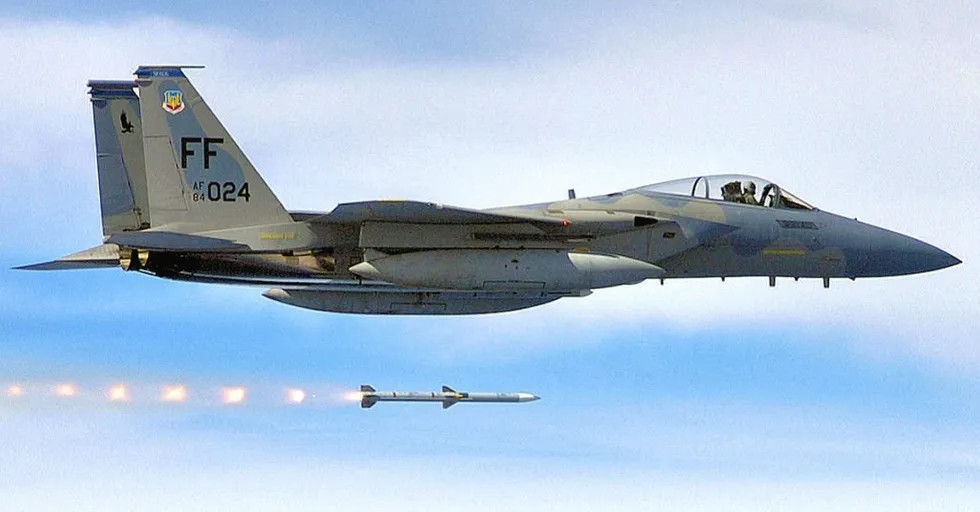
The report does not give an explanation for why it was possible to jettison the two missiles under the fuselage, but not the others. However, this would have been due to external fuel tanks, which remained attached to the aircraft throughout the mishap, presenting an obstacle to safely jettisoning the missiles on the underwing pylons. It was also determined that there was no major added risk to the aircraft or its pilot from leaving the 940 20mm cannon shells in the internal magazine.
Rock 42 then moved on to the emergency arrested landing at Portland International Airport. The F-15C successfully caught the wire on the arresting system on the approach end of the airport’s runway 28L.
Unfortunately, after the pilot had put the jet’s nose wheel down on the runway, it had risen up again approximately one foot off the ground. This high engagement angle led the aircraft’s arresting hook to slam into the full up position after it caught the wire, bringing the cable up with it. “The [arresting] cable impacted the left horizontal stabilator, left tail cone, left engine exhaust, right engine exhaust, and the right tail internal countermeasures set (ICS) antenna,” causing damage to all of those components, according to the report.
The left main landing gear, however, did not collapse as was feared might happen. Emergency crews and ground personnel met the jet on the runway, secured it and then towed the 142nd’s maintenance hangar to assess the damage.

The exact cause of the landing gear malfunction and any subsequent recommendations in the report are redacted. However, the narrative and other unredacted details point to a failure in the jury link, a supporting component attached to the main landing gear strut, as a key factor. “This specific LMLG [left main landing gear assembly] was modified by Time Compliance Technical Order (TCTO) 1F-15-1680 on 07 Jul 2017, to receive a newly manufactured upper jury link, replacing the previous jury link that was prone to failure,” an unredacted portion of the report notes.
The Air Force subsequently ruled this incident to be so-called Class C mishap, which covers accidents that result in between $50,000 and $500,000 worth of damage or a nonfatal injury or illness that put someone out of work for one or more days, or both. The report says that the official total cost of the damage to the Eagle was $418,280 dollars. All of the damaged components were deemed to be repairable.
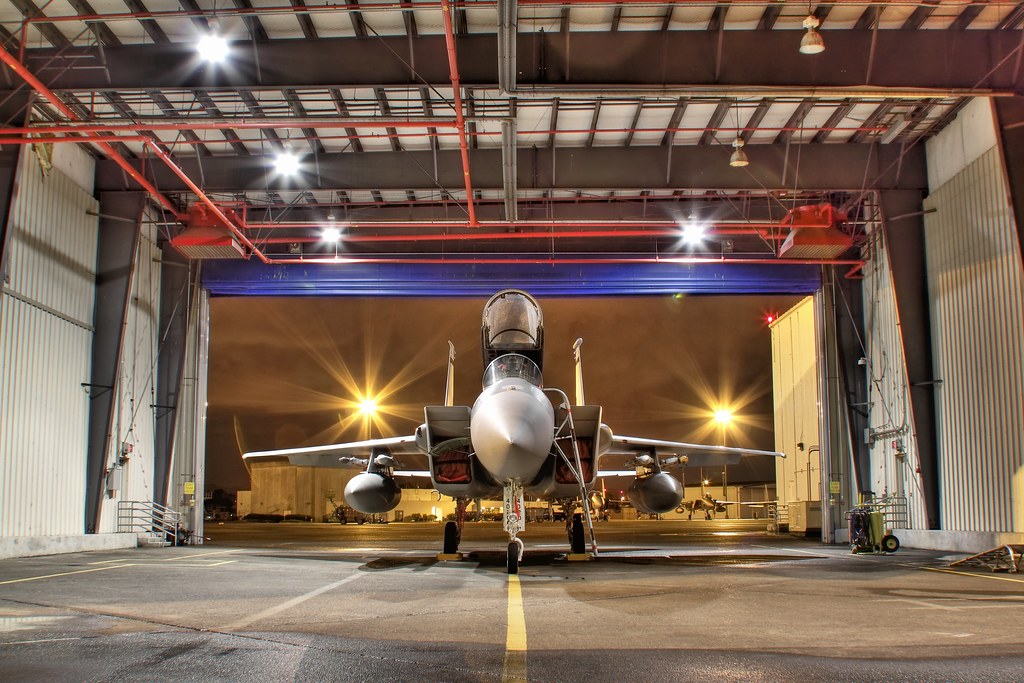
However, this figure notably and curiously does not include the cost of the expended missiles or flares. As The War Zone
noted at the time, this accident directly resulted in the loss of millions of dollars worth of missiles that would otherwise have remained in inventory.
Based on information from Pentagon budget documents, the estimated cost of each of the four lost AIM-120Cs was approximately $1 million, or $4 million in total. The accident report does not say that if the two expended AIM-9Xs were newer Block II models, which would have cost around $408,000, or older Block I missiles worth some $250,000. As of 2019, the unit price for the MJU-10/B was $184, meaning the Eagle expended nearly $9,000 in flares during the incident, as well. The full cost of all of the expended missiles and flares would have been more than $4.5 million, at least.
Of course, what matters most is that the pilot of Rock 42 made it back safely. That the jet sustained relatively limited damage itself, despite concerns about a possible belly-up landing, means that the outcome, in the end, was largely positive.
If nothing else, it’s good to finally have a more complete description of the bizarre impromptu Oregon Coast missile shoot and emergency landing, overall. You can find a full copy of the report, as The War Zone received it, here.
Contact the author: joe@thedrive.com
